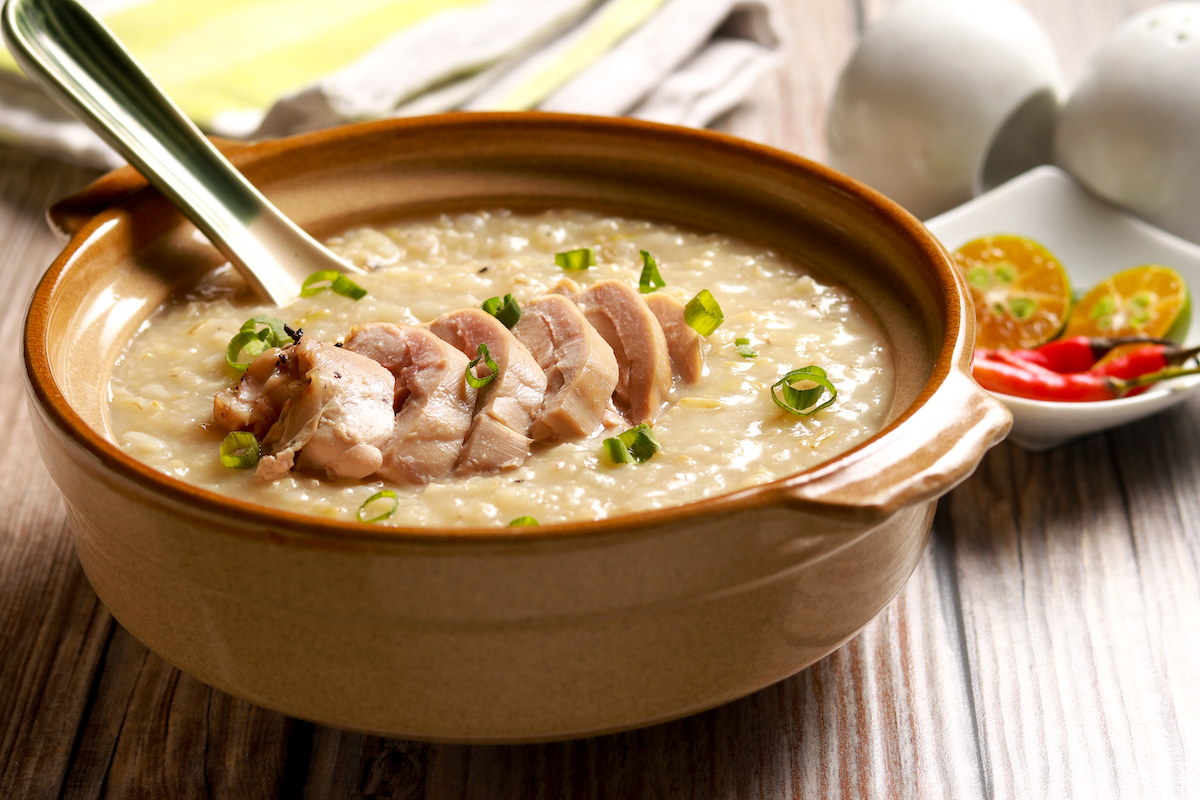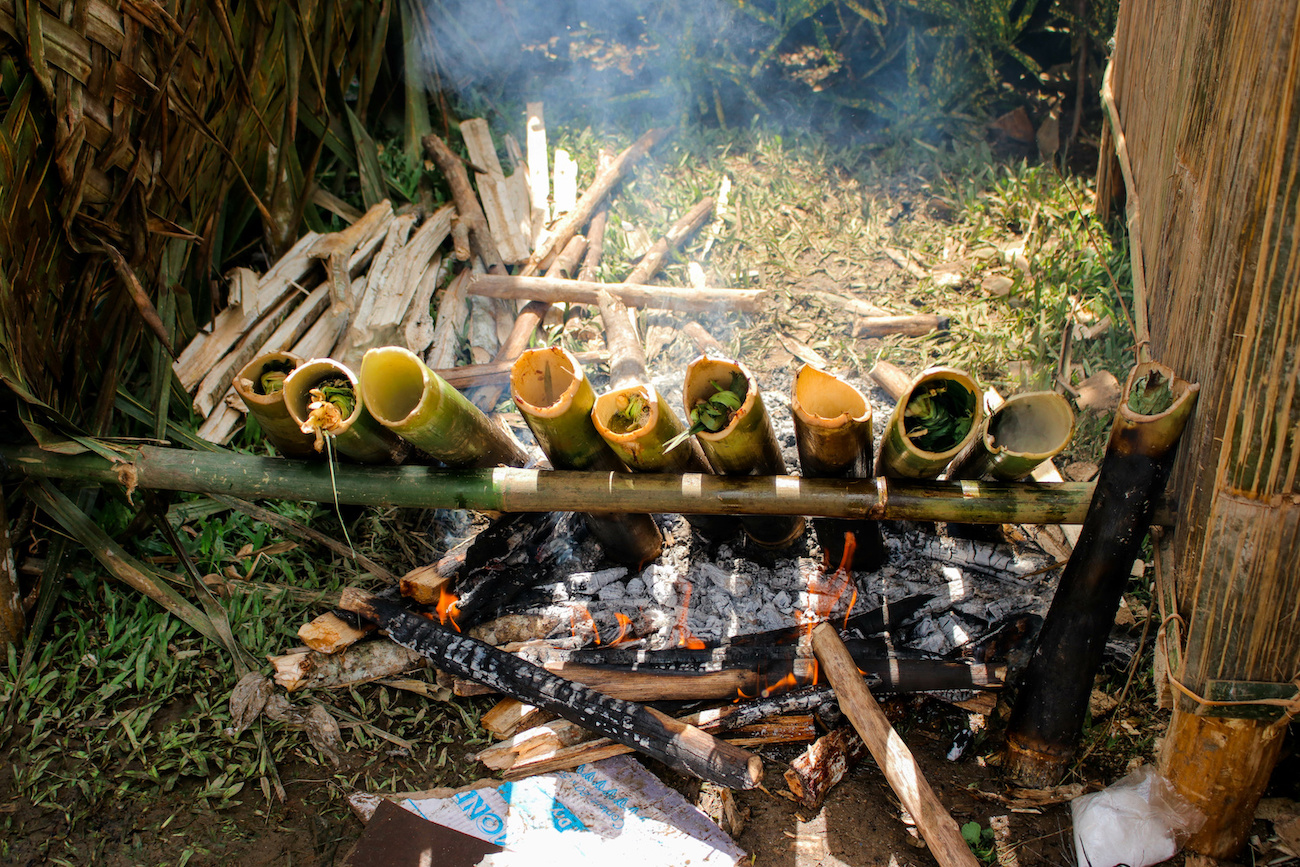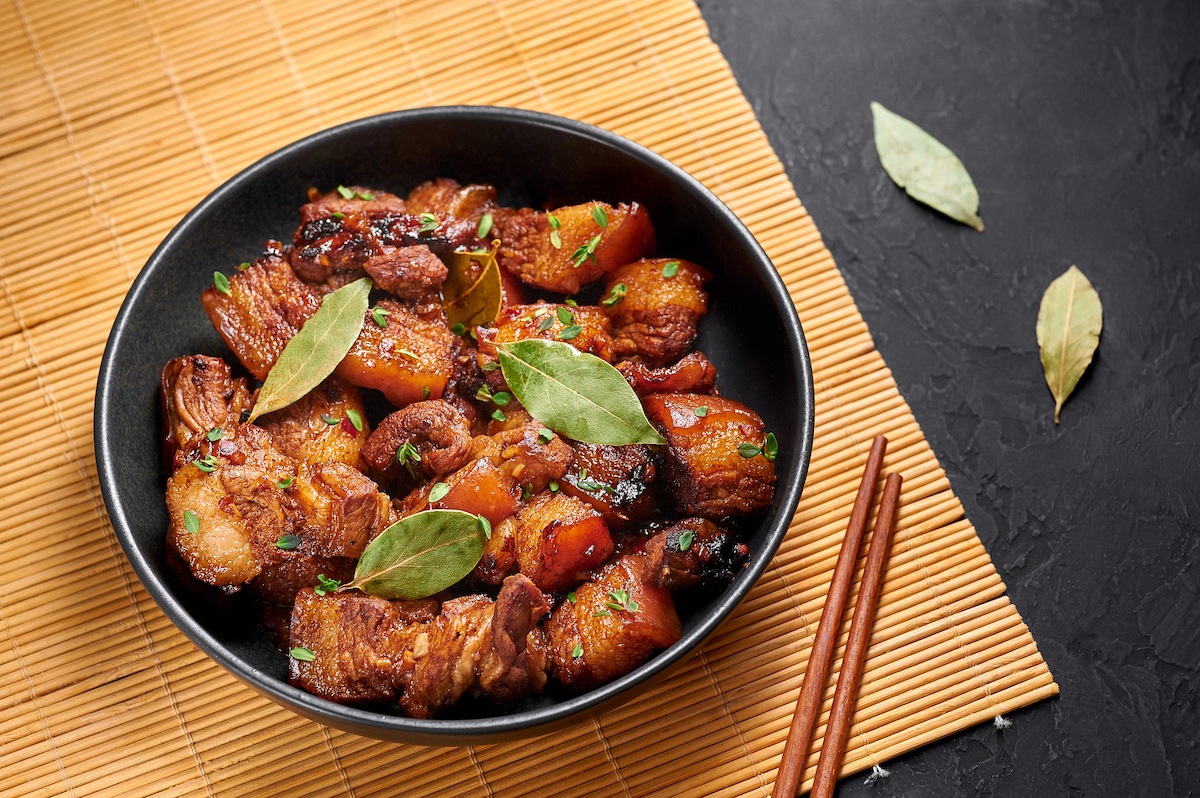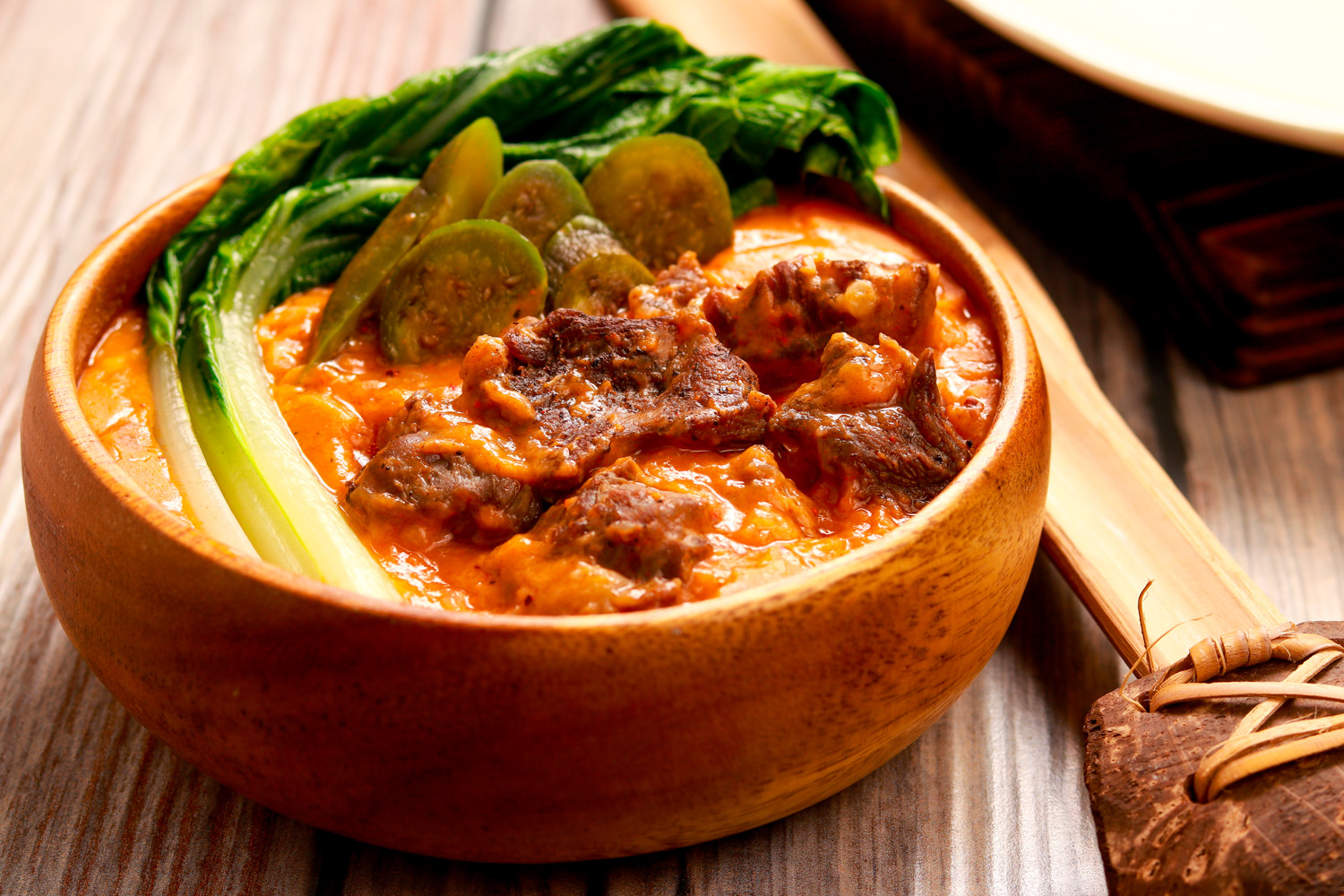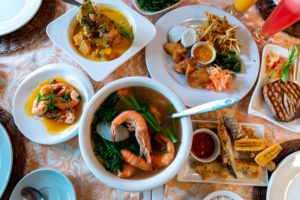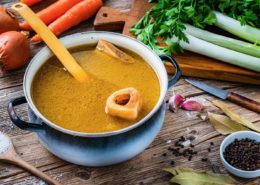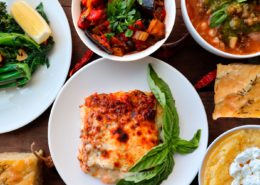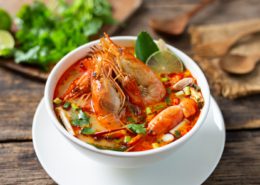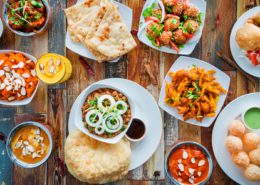Filipino Cuisine
Authentic Filipino Food
Just as the Filipino is a product of cultures; a true embodiment of East meets West, the same can be said about its cuisine. The diversity, character, and geography of the far remote islands collectively contributed to making its cuisine unique and special. Likewise, Filipino cuisine is composed of more than a hundred ethno linguistic groups found across its islands.
With such wide geography, vibrant culture and rich history, each area of the country reflects these influences in local variations of popular dishes. Flavor profiles are varied but there are distinct similarities that make it uniquely and originally Filipino.
One of the best ways to discover the unique nuances of a culture is through its cuisine. Each dish in Philippine cuisine reflects the people, history, and culture of a region, city, or island. Philippine cuisine is a direct fusion of indigenous ingredients, flavors, and outside influence. Filipino cuisine is sure to bring a unique experience to the table.
Filipino food is a mixture of sweet, salty, and sour. Hearty stews, grilled and fried meats and seafood with sawsawan (sauce accompaniment), spicy coconut milk-based regional dishes, vegetables with fermented shrimp and fish sauce, and the popular Filipino street food all makeup Filipino cuisine with its heavy use of onion, garlic, ginger, vinegar, soy sauce, and fish sauce.
Filipino Flavor and Beyond
Filipino food has been steadfast in keeping its originality and sustained its indigenous food despite all that it has endured. Filipino food has a deep and complex taste that has been described as linamnam. Literally “deliciousness” yet signifying much more, it is the root of the word malinamnam, which is how a Filipino might describe the savory and fragrant quality of a dish (Glenda Barretto, Conrad Calalang, Margarita Fores, Myrna Segismundo, Jessie Sincioco, and Claude Tayag, 2013). As early as the 1990s a journalist ventured into the Philippines to sample the cuisine despite hearing negative reviews about it. He wrote “I have never encountered a food world more complex and diverse yet more of itself… a harmonious panoply cobbled together from everywhere and transmuted, “Filipinized” into a comestible alloy with its own special properties.” (Raymond Sokolov, 1991)
Filipino cuisine varies a lot by region, province, island, and ethnic group. Every region in the country has its trademark dishes. Some of them have similarities but the regions often come up with their versions and twists. The most prominent Filipino cuisines are Tagalog, Pangalatok (from Pangasinan), Visayan (Cebuano, Hiligaynon and Waray), Ilocano, Kapampangan (from Pampanga), Bicolano, Chavacano, and Maranao provinces.
Filipino food is a mixture of sweet, salty, and tangy. Among the flavors, sourness is the most common. Souring is done through the use of souring fruit agents like calamondin, tamarind, bayabas, batuan, or processes like fermentation. While there are not many spices homegrown in the Philippines, the flavor profile consists primarily of garlic, onion, and ginger. Meticulous preparation and extended cooking time are also characteristic of most Filipino dishes. The trick is to let each flavor have its way without having to blend producing that mélange of sweet, salty, and tangy tastes. Filipino dishes are not just full of flavor, they are colorful and have an enticing aroma. Being in a Filipino kitchen is a full sensory experience from smell, taste, sight, texture, and sound. Food is a love language for many Filipinos. It brings together the whole family and extended family members.
The History of Filipino Food
The Indigenous Originality and the Malay Cultural Matrix Origins
One cannot begin an introspective into Philippine cuisine without bringing up rice. Rice is the Filipino staple edible and so much more. It was the first ingredient brought in by Indonesian, Malaysian, and Vietnamese immigrants. The characteristics of the Pre-colonial Filipino foodscape are primarily of Malay origin showing a distinctly original taste (Malay Cultural Matrix: Mainland and Island Southeast Asia – Doreen Fernandez, 1994). The same migrants taught early Filipinos the methods of steaming, boiling, and roasting over a fire, and popular foods were sour soup – sinigang and simmered in vinegar – kinilaw.
Although the pre-colonial Filipino food originated from the Malay cultural matrix, “through the course of its unique history, the Philippines has developed distinct culinary preferences of its own” (Amy Besa, Romy Dorotan, 2006). Native food from the country’s Islamic regions in Mindanao is also prevalent. Mindanao’s geographic proximity to neighboring Southeast Asian countries produced cuisine heavily influenced by its neighbors.
The Traders & Immigrants
Trade with Chinese merchants dating back to the Song Dynasty (China 960-1279 AD) and later on immigrants from Fujian and Guangdong provinces brought forth condiments such as bean sprouts, tofu, bamboo shoots, lemongrass, soy sauce, fish sauce, and most especially, noodles. They introduced the cooking method of stir-frying and rice and viand meals. Then came tradesmen and merchants from India, Thailand, and Japan. They introduced a wealth of spices, flavors, and new dishes to the country.
Foreign Influences
The coming of foreign influences introduced improvements in the Philippine culinary scene. New recipes, ingredients, and cooking techniques were integrated into Filipino culture. The Spanish came during the late 16th century and stayed on for a few hundred years. They gave Filipinos cutleries and the more significant Christmas feast traditions that are ever so popular today: all the “o” stews – cocido (beef and vegetable stew), menudo (stewed pork in tomato sauce with carrots and potato), pochero (stewed beef and vegetables in tomato sauce), mechado (larded beef in soy and tomato sauce), the preserved meats adobo (braised pork and sometimes chicken in garlic, vinegar, soy sauce, and bay leaf), the rolled meats like embutido and relleno, rice dishes like arroz and paellas and sweets like flans, brazo de mercedes and sweet pastries. They also introduced sautéing and braising, the use of pantry staples like garlic, onions, tomatoes, chili peppers, corn, and potatoes, and cattle-raising. Dairy and meats were also available but only to the upper class. With the Spanish relations, connections to the Mexicans and the Aztecs were also formed (from the Manila-Acapulco trade). They brought ingredients and their native dishes to the Philippine shores.
America’s influence is palpable in the Philippines. They brought in a slew of fast food and canned meats: hot dogs, hamburgers, luncheon meat, fried chicken, and sandwiches. Aside from that, they also introduced other long-shelf life pantry items such as evaporated milk and sweetened condensed milk, tomato sauce, and processed cheese. Kitchen appliances and cooking technologies such as freezing, preparing, and storing food were also shared with the locals.
Diverse Filipino Dishes to Savor
Filipino dishes vary from simple fare such as rice and salted fried fish, curries such as chicken and fish, or the more derived kare-kare paired with fermented shrimp paste, to more complex paellas and cocidos of Spanish origin meant for holiday feasts. Popular dishes include sisig (one of the most thoroughly cooked dishes in the country, pig’s face cooked in butter with onions and chilies), lechon (whole roasted pig), longanisa (cured pork links similar to chorizo), torta (omelette), dinuguan (pork offal and blood stew), adobo, sinigiang, kilawin, kaldereta (meat stewed in tomato sauce), pinakbet (vegetable stew flavored with fermented fish paste), laing (spicy shredded taro leaves cooked in coconut milk), and paksiw (milkfish stewed in vinegar and spices),
The most notable dishes are paired with rice. The cuisine often calls for dipping sauces (called sawsawan). Sawsawan is usually a permutation of calamondin (Philippine lime known as calamansi), soy sauce, vinegar, fish sauce, onion, garlic, and red or white chilies. Aside from sawsawan, Filipinos also make use of many types of condiments. There’s banana ketchup, bagoong (fermented shrimp or fish paste), buro (fermented rice), or atchara (pickled papaya). Filipinos love their condiments and dipping sauces to match fried foods and soups.
A usual breakfast is called si-log which is typically rice (fried rice with garlic called sinangag), itlog (egg, usually fried) and a viand. The viands span from longanisa, tocino (sweet-salty cured and preserved pork loins), milkfish (either dried or marinated then deep-fried), tapa (cured meat), bacon, tuyo (salted, dried herring), hotdog, corned beef, dried fish and so much more.
Filipino Cooking: An Ever-Evolving Craft
Filipino cuisine, much like the character of its people, contains a myriad of diverse amalgamated cultures and influences. Many of these influences are a product of previous colonization and interactions with merchants and traders. Filipino food reflects the Filipino’s relation to his environment, his fellowmen, and the world (Doreen Fernandez, 1988). Filipino cuisine is a product of the many different cultures that have shaped its history. The style of cooking and staple ingredients have evolved over several centuries from its Malay origins to a mix of Spanish, Chinese, Arab, Hindu, American, and other Asian influences adapted to endemic ingredients and the local palate. Filipino character is gloriously maintained and represented in this evolving and adapted cuisine.
Filipinos resilient as they are, welcomed cooking techniques, and ingredients and embraced the exchange of cuisines. They creatively worked with ingredients that were readily available and skillfully adapted the recipes they learned to suit local palates. Spanish adobo, traditionally oil-based, was enhanced with soy sauce. Chinese egg rolls became turon (caramelized banana and jackfruit in spring roll wrap), Shanghai spring rolls (a distant cousin of the egg rolls), and vegetable lumpia (julienned vegetables in spring roll wrap deep-fried and dipped in a condiment of vinegar, onion, chili, and pepper).
Much has been done to elevate Filipino food cuisine through the years to be as recognized globally as its’ South East Asian counterparts. More and more Filipino restaurants have been given accolades, and quite recently awarded Michelin stars. While Filipino cuisine has been steadily gaining recognition for its flavor-packed dishes, it is still a young cuisine and is ever-changing and evolving. Many Filipino communities celebrate the cuisine through festivals and events featuring regional, and popular cuisine.
“[The developments in] the Filipino cuisine is a sum of Philippine history, from the indigenous food of the prehistoric era to the influences of Southeast Asian cooking brought by trade, and the colonial influences brought by conquest. In recent years, because of domestic migration, tourism, national food businesses, and through the mass media, regional dishes have gone beyond their borders and become part of the national table,” say several analysts (Barretto, et al. 2013).
Find Local Filipino Shefs & Meals
When searching for “Filipino cuisine near me”, you’ll find Shef delivers Filipino food in the following locations:
- Los Angeles
- San Francisco (Bay Area)
- Chicago
- New York City
- New Jersey
- Seattle
Find your local home-cooked Filipino food today!



